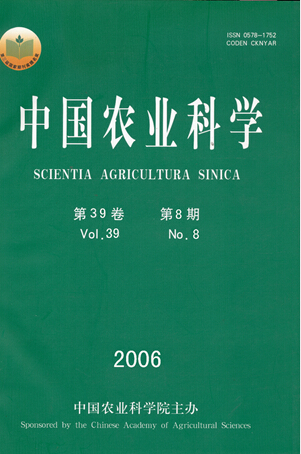-
Cloning and Sequence Analysis of Yak Heart Fatty Acid-Binding Protein (H-FABP) Gene
- ,,,,,
-
Scientia Agricultura Sinica. 2006, 39(8):
1639-1650 .
-
 Abstract
(
2175 )
Abstract
(
2175 )
 PDF (559KB)
(
1650
)
PDF (559KB)
(
1650
)
 Save
Save
-
Related Articles |
Metrics
【Objective】The yak heart fatty acid-binding protein (H-FABP) gene was cloned and sequenced. This was then compared to the deduced amino acid sequence with the homologous H-FABP gene. It was also compared with the protein sequence of the H-FABPs in other species (including cow, sheep, goats, pigs, human, rats, mice, chicks and zebra-fish) retrieved from the
GenBank . These comparisons were performed in order to provide a theoretical foundation for further research of the correlation of yak H-FABP gene and meat quality, molecular breeding, location and expression.【Method】The yak H-FABP gene was amplified using particular primers, cloned by T-A method and sequenced, based on this the nucleotide and amino acid sequences among different species were compared and analyzed by RepeatMasker、DNAMAN4.0、BioEdit4.8.10、Clustal W1.81 i.e, bio-softs.【Result】The number of exons and introns of yak H-FABP gene (GenBank Accession No: DQ026674) were as same as those in cow, sheep, goats, pigs, human, rats, mice, chicks and zebra-fish. They had 4 exons and 3 introns. The size of CDS sequence of the yak H-FABP gene, encoding 133 amino acid, was 402 bp. The size of exon I, exonⅡ, exonⅢ and exonⅣ was 73 bp, 173 bp, 102 bp and 54 bp respectively; while the size of intron I, intronⅡand intronⅢ was 3 460 bp, 1 892 bp and 1 495 bp respectively. The junction sequence of exons and introns of yak H-FABP gene was in accordance with the law of gene composition. The rate of the repetitive sequence was 13.07% in the nucleotide sequence of yak H-FABP gene. Five repetitive elements were found in the intronⅠ, including a SINE/Artiodactyls element, a SINE/MIR3 element, a SINE/Bov-tA1 element and two SINE/MIR elements. No repetitive element was found in intronⅡ. Three repetitive elements were found in intron3, including a SINE/MIR element, a LINE/L2 element and a SINE/Artiodactyls element. The rate of the repetitive sequence was 11.85% for SINEs, 6.44% for MIRs and 1.22% for LINEs respectively. In addition, LINE1, BovB/Art2, L3/CR1 repetitive elements, LTR anti-transcription element and DNA transposing element were not found in this sequence. The nucleotide sequence of the coding region and deduced amino-acid sequences among different species were quite conservative. The homology rates of nucleotide sequences of the coding region of H-FABP gene between the yak and cow, sheep, goat, pig, human, rat, mouse, chick and zebra-fish were 99.8%, 97.8%, 97.0%, 92.8%, 88.8%, 83.3%, 83.1%, 76.4%, 68.7% respectively, while the homology rates of amino-acid sequences were 100%, 96.9%, 96.9%, 92.4%, 88.7%, 85.7%, 85.7%, 77.4%, 69.9% respectively. 【Conclusion】The yak H-FABP gene had 4 exons and 3 introns. The size of CDS sequence of the yak H-FABP gene, encoding 133 amino-acid, was 402 bp. The size of exon I, exonⅡ, exonⅢ and exonⅣ was 73 bp, 173 bp, 102 bp and 54 bp respectively; while the size of intron I, intronⅡand intronⅢ was 3 460 bp, 1 892 bp and 1 495 bp respectively. There were many repetitive elements in the nucleotide sequence of yak H-FABP gene, and the junction sequence of exons and introns was accordance with the law of gene composition. The nucleotide sequences of the coding region and deduced amino acid sequences between yak and cow, sheep, goats, pigs, human, rats, mice, chicks and zebra-fish were quite conservative.









